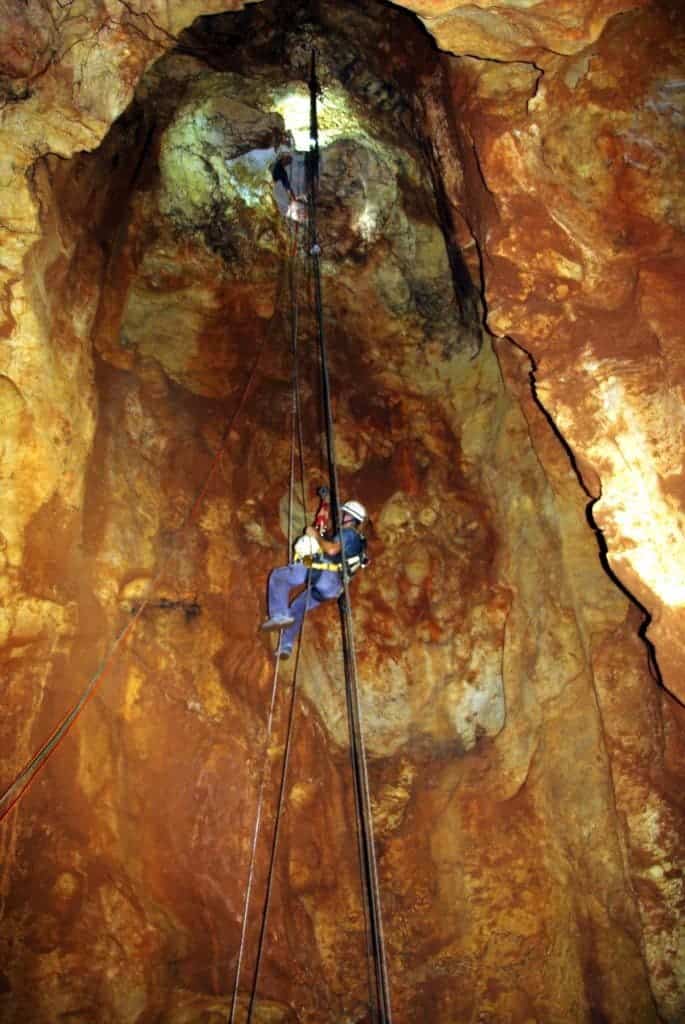An ancient skull found in Israel indicates that early Homo sapiens likely interbred with Neanderthals 50,000 years ago. The female skull is the first skeletal evidence to support the idea that Neandertals and moderns mated. The finding is published in the journal Nature.

The Neanderthals (Homo neanderthalensis) are closely related to modern humans, differing in DNA by only 0.12%. Genetic evidence published in 2014 suggests that Neanderthals contributed to the DNA of anatomically modern humans, probably through interbreeding. In fact, at least two separate studies concluded that Neanderethals and humans interbred, (1, 2) but this is the first skeletal evidence found to confirm this. Most anthropologists already agreed that this happened, so this should come not as a surprise, but rather as a piece, further completing the puzzle. It’s actually estimated that Neanderthals make a significant part of our genome.
Discovered in a cave in western Galilee, the partial skull belonged to a woman who lived around 55,000 years ago. Discovered in a cave in western Galilee, the skull is the earliest record of modern humans in that area. For the human side, it makes a lot of sense. Homo sapiens left Africa over 60,000 years ago, but as Europe had a very harsh climate at the time, this greatly limited their potential to adapt on the old continent. Most of the continent was actually off limits for humans – but not for Neanderthals.
Neanderthals were quite better than humans at hunting and living in cold areas, so they thrived before the climate started to warm. Numerous Neanderthal skeletons have been found in caves in Israel and other parts of the Middle East over the years, but no mating signs had been found. It seems pretty strange that for all the thousands of years in which humans were roaming parts of Europe, no skeletons were found. This was actually a big problem; as I said above, it was believed that humans interbred with Neanderthals, but why weren’t any human skeletons found then?
It’s still not clear why more human skeletons haven’t been found, but at least one was found. Tel Aviv University anthropologist Israel Hershkovitz and other scientists excavated the Manot cave, located 40 kilometers north of numerous other sites where both Neandertal and earlier modern human skeletons have been found.
“Manot is the best candidate for the interbreeding of modern humans with Neanderthals and there is really no other candidate,” chief Hershkovitz said. “The people at Manot cave are the only population we know of that shared the same geographical region for a very long period of time,” he added. Without DNA from the skull, it is impossible to know if the Manot cave individual was a product of such couplings.

Even though the skull is missing a jaw, it’s still a remarkable find.
“Manot is the first and only modern human securely dated to 50,000 to 60,000 years ago outside the African continent,” Hershkovitz says. That means that the Middle East “was the most likely place for the love affair” between modern humans and Neandertals. Other experts agree. “This is an exciting find, and it certainly falls in a crucial temporal and geographic gap in the human fossil record,” says Katerina Harvati, a paleoanthropologist at the University of Tübingen in Germany. “This is something we did not have [fossil] evidence for earlier.”
The cave was actually discovered by accident when a bulldozer broke through the roof while cutting a sewer trench for a nearby village. When scientists explored it, they were shocked to find that the cave opened up more than 20 metres deep, 50 metres wide and 100 metres long. This was the cave’s original sized, but it’s entrance collapsed some 30,000 years ago.

“We couldn’t believe our eyes. We immediately realised it was a prehistoric cave and that it had been inhabited for a very long time. Because the entrance had collapsed so long ago, it had been frozen in time. Nobody had been inside for 30,000 years,” said Hershkovitz. There is a huge central cave and several beautiful side chambers. In one side chamber, the skull was lying there on top of a rocky shelf. It was there waiting for us. We just had to pick it up,” he added.
It’s still not clear how the skull ended up on top of that shelf – it may have got there by accident carried by water, or more likely, it was placed there by some individual.
The research appears in the journal Nature under the title “Levantine cranium from Manot Cave (Israel) foreshadows the first European modern humans” (DOI 10.1038/nature14134).






